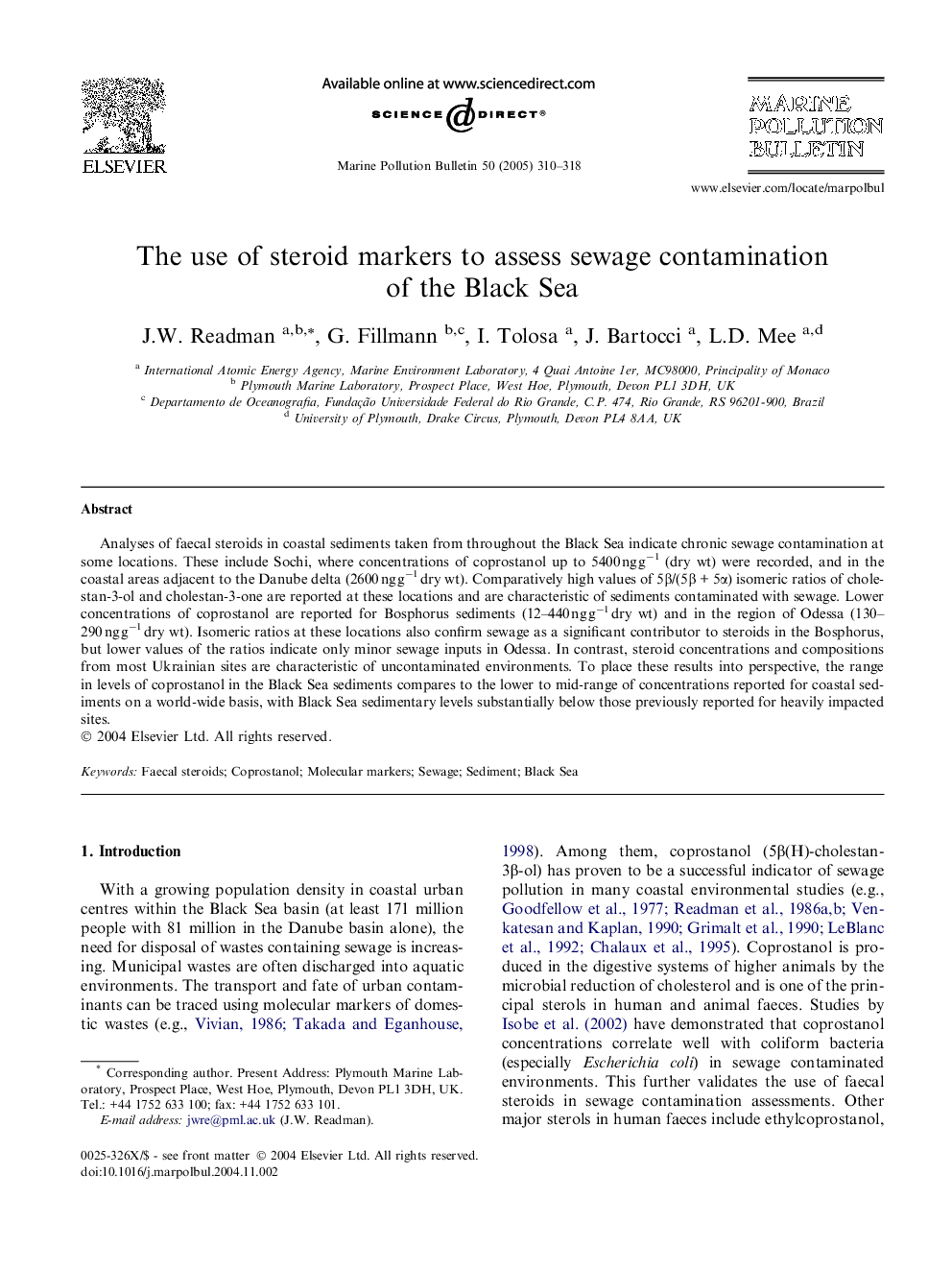| Article ID | Journal | Published Year | Pages | File Type |
|---|---|---|---|---|
| 9466078 | Marine Pollution Bulletin | 2005 | 9 Pages |
Abstract
Analyses of faecal steroids in coastal sediments taken from throughout the Black Sea indicate chronic sewage contamination at some locations. These include Sochi, where concentrations of coprostanol up to 5400 ng gâ1 (dry wt) were recorded, and in the coastal areas adjacent to the Danube delta (2600 ng gâ1 dry wt). Comparatively high values of 5β/(5β + 5α) isomeric ratios of cholestan-3-ol and cholestan-3-one are reported at these locations and are characteristic of sediments contaminated with sewage. Lower concentrations of coprostanol are reported for Bosphorus sediments (12-440 ng gâ1 dry wt) and in the region of Odessa (130-290 ng gâ1 dry wt). Isomeric ratios at these locations also confirm sewage as a significant contributor to steroids in the Bosphorus, but lower values of the ratios indicate only minor sewage inputs in Odessa. In contrast, steroid concentrations and compositions from most Ukrainian sites are characteristic of uncontaminated environments. To place these results into perspective, the range in levels of coprostanol in the Black Sea sediments compares to the lower to mid-range of concentrations reported for coastal sediments on a world-wide basis, with Black Sea sedimentary levels substantially below those previously reported for heavily impacted sites.
Related Topics
Physical Sciences and Engineering
Earth and Planetary Sciences
Oceanography
Authors
J.W. Readman, G. Fillmann, I. Tolosa, J. Bartocci, L.D. Mee,
